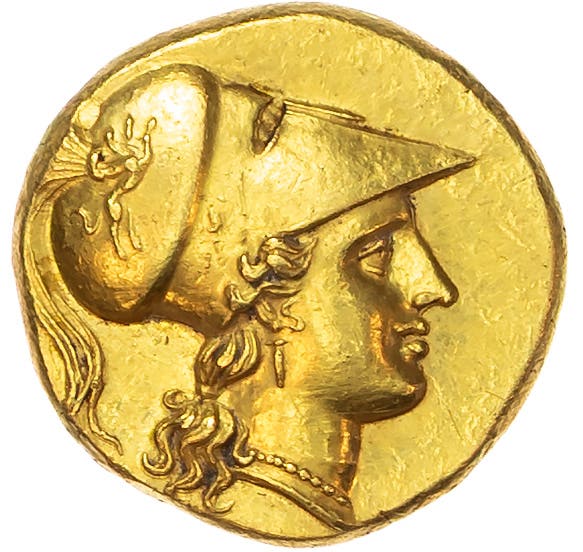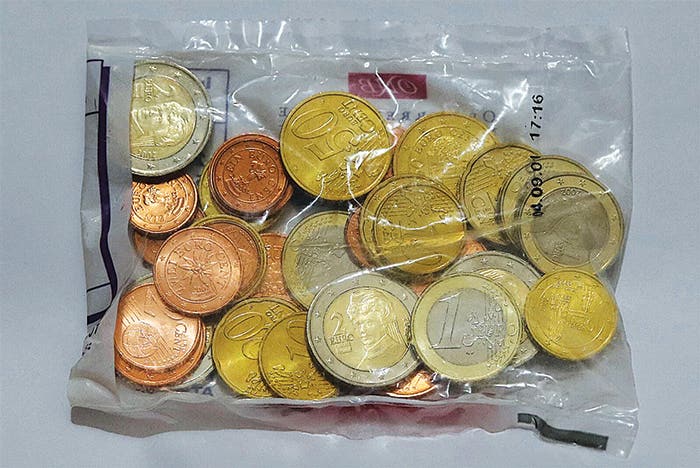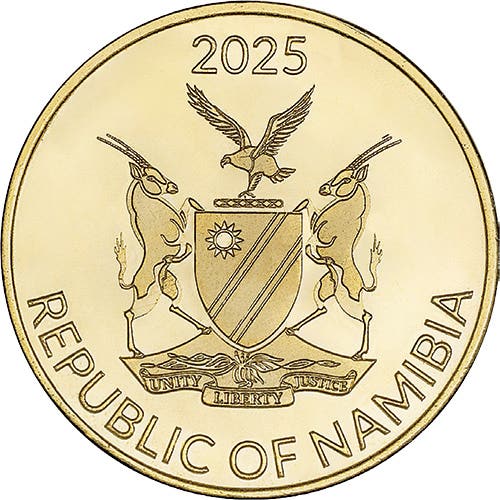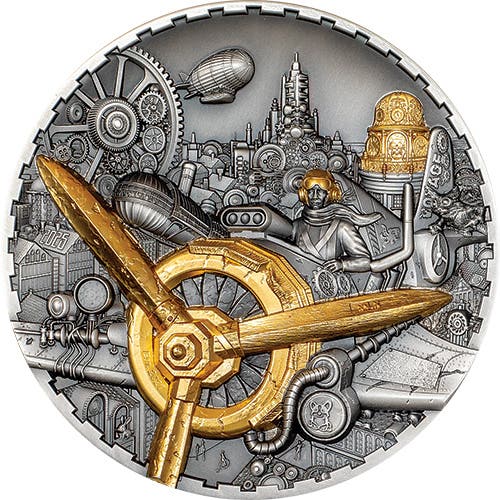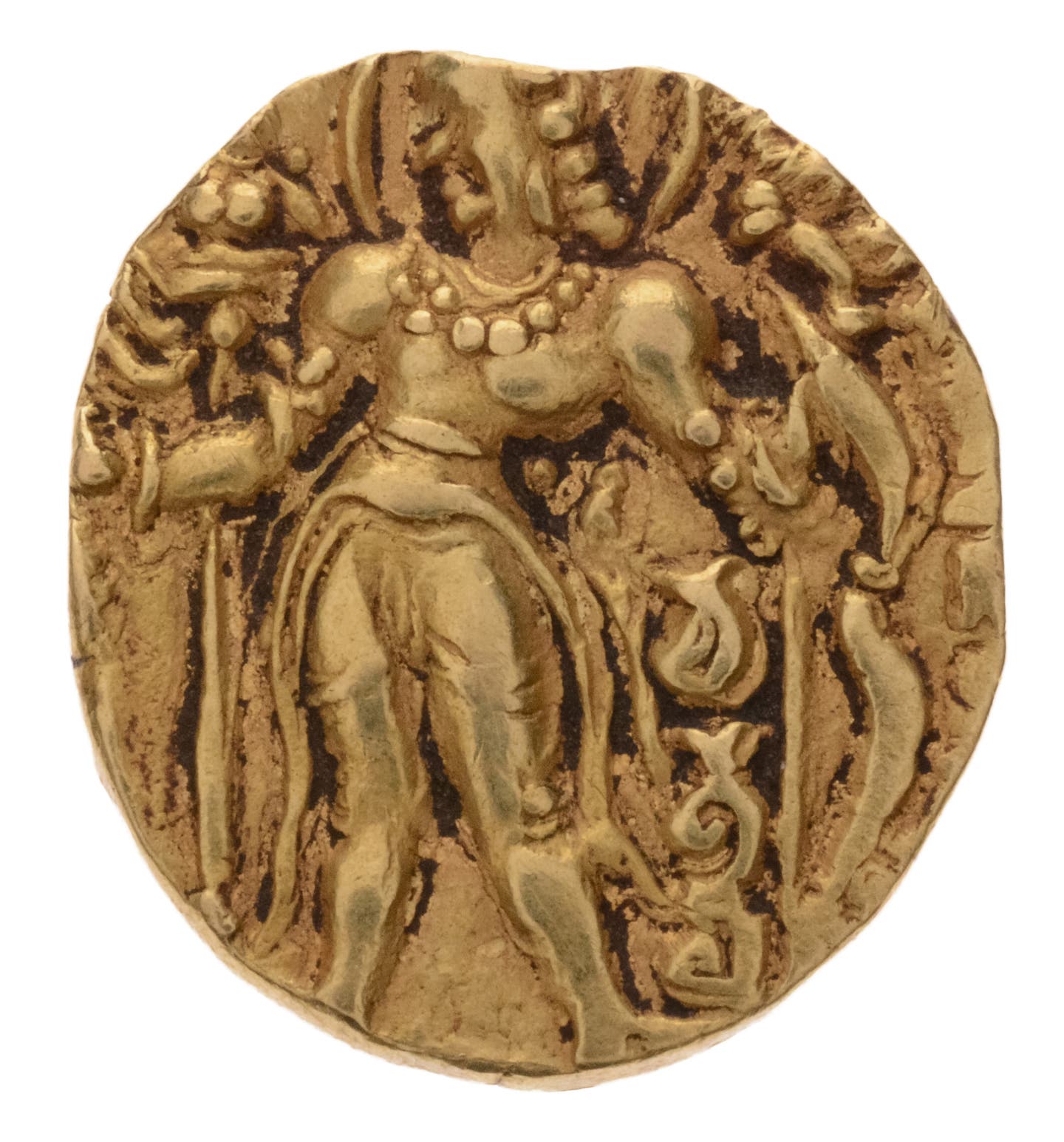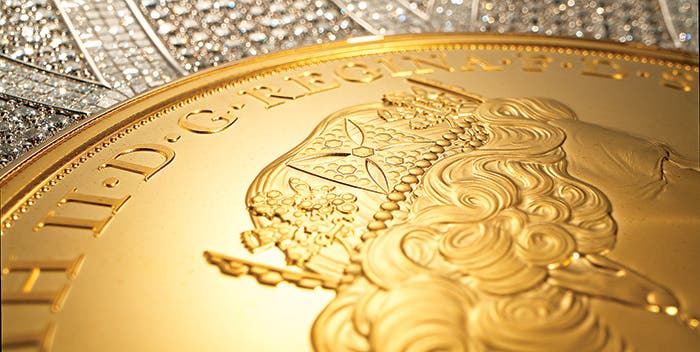Big Prices at SARC Auction 39
Stephen Album Rare Coins is one of those up and coming auction firms which can offer prospective buyers some very exciting opportunities. In their recent Auction 39 for instance, they…
Stephen Album Rare Coins is one of those up and coming auction firms which can offer prospective buyers some very exciting opportunities. In their recent Auction 39 for instance, they cataloged a great little Thailand gold coin with an important historical past that sold for a very reasonable $31,200. Reasonable you say! Well yes, but all things are relative.
The early 19th century coinage of Thailand was a handmade production of silver, heated and manipulated into pinched balls with official dynastic marks applied. We call them Bullet coins and there are a great many types and quite a few sizes. Bullet coins are measured in weight, and the denomination names you might see them listed under are all tied to exact weights. The base unit of weight for a Bullet coin is called the Baht which is equivalent to 15.40 grams. Most Bullet coins are silver, but there are some small gold ones and a few large gold Bullet coins, which are pretty rare.
Bullet coins were used in Thailand all the way from medieval times up to the mid-nineteenth century. The process of evolving to modern milled coinage production took a while in Thailand and during the interim coin shortages required some temporary measures. The first such transitional coins were hand hammered silver and gold Fuang and Salung produced under Rama IV in 1856. Later between 1858 and 1860 Mexican 8 Reales coming in through the blossoming foreign trade were also used, after having been countermarked with the royal Chakra and Mongkut symbols to guarantee their current exchange value by weight, much like the Bullet coins had been.
The modern milled coins finally came into circulation in 1860. The temporary coinage was in use for just four years making them fairly difficult for collectors to find and all around quite costly to obtain.
SARC Auction 39 held one such piece, a rare Gold Fuang, C175 type, which is rarely seen for sale. The SCWC lists quotes a Taisei-Baldwin-Gillio Singapore auction in March 1996 where one in AU condition realized $42,000. As I mentioned the SARC Auction 39 Gold Fuang of 1856 graded by PCGS as AU55 sold for $31,200 with buyers fee included, so I call that a bargain.
Auction 39 offered a stunning Chihli Dragon dollar which was graded MS63+ by PCGS. The pre-sale top end estimate was $22,000 which seemed reasonable enough to me, but final hammer came at $32,500 and closed for $39,000 after buyer’s fee. The Y 65.2 is the most commonly encountered of the early Peiyang Arsenal mint Dragon dollars. It is the type with eyelids on the dragon, struck in year 24 (1898). This particular example sold for such a steep price because in MS63+ it is an exceptional grade rarity.
There were a number of silver Rupees of Tibet in Auction 39. These are always of great interest for collectors of this area and to see a group of 22 examples in one sale is a real treat. One of the 22 sold within its pre-sale estimate range, while all the rest went well over top estimate. Many doubled their top end estimates and a handful went for four to seven times their top estimate. Two of the rarely seen ½ Rupee types sold for 12 and 13 times their upper estimate, but the cream of the crop, a ¼ Rupee in stunning PCGS MS63 sold for a fantastic $20,400, about 17 times its high range pre-sale estimate. The Standard Catalog of World Coins values definitely need to be restructured.
Following the successful Auction 39, the Stephen Album Rare Coin group put together a 700 lot Internet Auction 8. This was a really fun sale with lots of interesting and unusual material, as well as some coins of true live auction quality. Internet Auction 8 saw many of its highest priced lots in the United States coinage section. That was a big surprise to me, however, Paul Montz, SARC’s Chief Financial Officer, had mentioned that they were getting some fine U.S. coin consignments when we last spoke near the end of 2020.
On pre-sale estimates totaling about $75,000 Internet Auction 8 garnered a sale total of $116,700. If you are a collector of average means, these Internet Auctions are where you want to be looking for great coins at reasonable prices. You’ll face some competition, but if you center in on just the lots you seek most fervently, success will come your way.
The northern European coins in the sale offered many nice pieces. A Saxony 2/3 Thaler of 1768 in PCGS MS64 is not a coin you will often encounter. It’s not a common type, but that grade is exceptional and was a bargain at $420. In Denmark there was a Christian VII Speciedaler of 1797 grading PCGS MS62 which is a rather scarce type to find in mint state. It went for just $600, which is a sweet deal. A Saxe-Meiningen 2 Mark of 1915 under Bernhard III in PCGS MS66 and sporting great natural toning is an exceptional find and great buy at $360.
All three of these coins sold just a nudge over top end estimate. Given the scarcity of their types and exception quality in grade, all three were great bargains for their new owners.
Latin American coins in Internet Auction 8 were also provided an interesting selection with some very nice quality. Colonial coins in Brazil, Bolivia and Portuguese Indian all caught my eye and held my attention. Most sold for very reasonable prices.
Counter marked coins were scattered throughout Internet Auction 8. While there were some scarce types and unusual hosts which stirred high interest and brought big bucks, there were also opportunities for beginning collectors to dip their toe into the intensely studious world of counter marked coinage.
The Hans Wilski Collection of counter marked Ottoman coppers continues to cross the block through Stephen Albums Rare Coins Internet Auction in the 8th sale. Many of the identified Ottoman countered coins from Wilski’s collection were sold in earlier SARC sales, some for pretty stunning prices for a series that has gone under-appreciated for a long time.
Wilski wrote Countermarks on Ottoman Coins in 1995, in German, using his collection as the main reference. His research was extensive and is one of only two sources I know for identifying these, primarily Greek, Turkish and Mediterranean countermarks. The other book is Countermarks of the Ottoman Empire 1880-1922 by Kenneth Mackenzie and Samuel Lachman, published in 1974. Though MacKenzie and Lachman is a good listing of the many types of countermarks and provides a basic notion of regions and possible kinds of issuers, twenty years on Wilski had identified many more specifics and provided much more exacting information.
In Internet Auction 8 there was a nice selection of almost 40 of the unattributed Ottoman counter marked coppers, each of which sold for very reasonable prices around $30-$40.These are really intriguing little pieces which have a long history in the region. If you like a little challenge in your collecting pursuits, these are the coins for you. Most of these countermarks are from unknown issuers. They were just struck coppers and other lower values coins punched locally for circulation in specific businesses, towns and regions.
Check www.stevealbum.com to review these sales yourself and set up an account so you can get bidding for the upcoming SARC offerings including an April 12 Internet Auction 9, Auction 40 set for May13-15, Internet Auction 10 on June 14 and Auction 41 planned for September 9-11. If you are thinking of seller part or all of your collection remember the SARC consignment deadline for Auction 41 is July 1, 2021.




